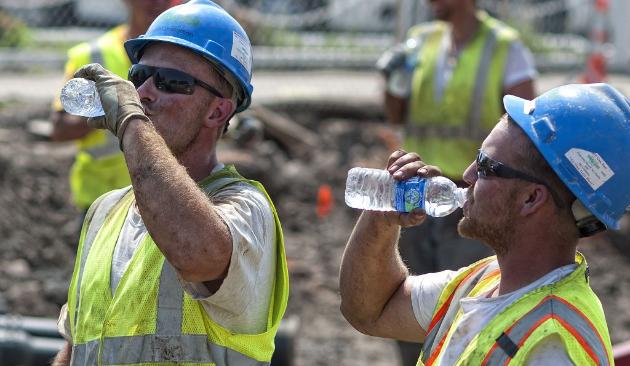Tuesday July 28, 2020 ~ BC
~ West Shore Voice News [news release from WorkSafeBC]
With high temperatures in many parts of the province, WorkSafeBC is reminding employers and workers about the risk of developing symptoms of heat stress when working outdoors. Left untreated, heat stress can lead to injuries from heat exhaustion and heat stroke.
“With the hot weather, workers and employers need to be aware of the risks from sun exposure and heat stress,” said Barry Nakahara, Senior Manager of Prevention Field Services at WorkSafeBC. “Heat stress is a preventable injury, yet last year in B.C. there were 26 accepted claims for work-related heat stress injuries.”
What is heat stress:
Heat stress occurs when your internal temperature increases faster than the body can cool itself. Symptoms of heat exhaustion include excess sweating, dizziness, fainting and muscle cramps. Symptoms of heat stroke include cessation of sweating, an increased breathing rate, confusion, seizures and even cardiac arrest.
Heat stress assessment:

To prevent heat stress injuries, WorkSafeBC requires employers to conduct heat stress assessments. As appropriate, employers must have a heat stress mitigation plan that provides education and training in recognizing the symptoms of heat stress and heat stroke.
Employers and workers can take the following preventive measures to prevent heat stress.
Prevention of Heat Stress: Employers
· Change work practices and policies to limit the risk
· Monitor heat conditions and require workers not to work alone
· Determine appropriate work-rest cycles; when a worker feels ill it may be too late
· Rotate work activities or use additional workers to reduce exposure
· Establish cooling areas with shade and water
· Ensure there is adequate first-aid coverage and emergency procedures are in place
· Make physical modifications to facilities, equipment, processes to reduce exposure

Prevention of Heat Stress: Workers
· Keep hydrated and drink plenty of water (one glass every 20 minutes)
· Wear light-coloured, loose-fitting clothing made of breathable fabric, such as cotton
· Take rest breaks in a cool, well-ventilated area
· Do hard physical work during the coolest parts of the day, before 11 a.m. and after 3 p.m.
· Know your personal risk factors, such as medications and any pre-existing conditions
· Check for signs and symptoms of heat stress
More information:
Learn more about heat stress at worksafebc.com. Read Preventing Heat Stress at Work or watch Sun Safety at Work on WorkSafeBC’s YouTube channel.



